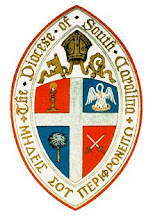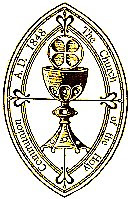Portugal is a delightful, relatively inexpensive and largely undiscovered place for tourists if you stay out of the Algarve beach areas (a major British tourist area) and region around the capital city, Lisbon. [Actually, Lisbon is wonderful for tourists... it's just not 'largely undiscovered'!] Portugal is particularly fascinating for people interested in history: it is the oldest nation in Europe in terms of unchanged borders, and before it was Portuguese, much of it was Moorish (as can be told by elements in the architecture, language and even cooking), before that, Suevi Christian they were related to the Goths and Visigoths), before that, Roman (Braga in the north was once Bracara Augusta, the capital of the Roman northern Iberian province), before it was Roman, Lisbon was a Phoenician trading port (the same Phoenicians as in the Old Testament), while much of the rest of the country was Celtic (yes, same tribe as the original Scots and Irish, and bagpipes are still played in rural areas!), and WAY back in prehistory, it was Liguorian.
For wine lovers, Portugal is amazing-- a nation the size of Indiana in the US, but with dozens of very different growing areas and wines. The wines (both full-bodied reds and whites) of the Douro area (near Porto, also the home of Port wine) and of the Alentejo (southeast of Lisbon) are my particular favourites, along with the Vinho Verde (literally, 'green, or new, wine') of Minho in the far north. Vinho Verde comes in both reds and whites, is somewhat less alcoholic at app. 10% vice the 12.5-14% of most wines, and is light, refreshing and almost bubbly. The only place in the world producing it is the Minho area, and it's only recently begun being exported.
There is some very good regional cooking-- visitors should try Carne de Porco Alentejano, a casserole of cubed pork, potatoes and tiny clams, still in their shells, and at least one of the over 100 (1000?) ways bacalhau is prepared-- dried cod that has been soaked so that appears fresh, and cooked in a myriad of tasty ways. At the "fast food" level, while it's true that you can find a McDonald's (NASA's Mars Explorer reportedly found one there, too), the Portuguese equivalent of a 'Big Mac', a "Prego em Pão", is infinitely better-- a thin-sliced steak with even-thinner slices of ham and cheese and a fresh-baked roll. A short step up is a "Prego em Prato"-- the same thing on a plate, only with a fried egg on top (it's actually delicious!), with the olives and bread on the side-- along with both fries and rice. It isn't too hard to find starches here! Equally good is "Feveras em Pão", a thin-sliced, peppery pork steak on a fresh-baked roll, or "em Prato", with the olives, fries, rice and bread. If you ask for an 'ovo estrelado', you can get the fried egg on top!
It's a great country for farmer-made cheeses, too-- cow, sheep, goat, or mixtures thereof. Between the different cheeses, the dozens of regional sausages and the vast varieties of breads (I counted over 40 versions of each at a local supermarket), you can eat very well... if you've saved room for a meal after sampling the dozens of different pastries, often invented in convents and delicious with Portugal's strong coffee, and available at little cafés on almost every street corner.
Most cafés/bars (there is no strict distinction made in Portugal-- the place that serves you your morning coffee (an espresso is a 'café' in the north; a 'bica' in Lisboa and further south) and pastry will sell you a sandwich and a draft beer later in the day (a 'fino' in the north, an 'Imperiál' in Lisbon and further south!). Both cafés and restaurants usually have televisions on, a distraction or annoyance for some American travelers. Although the TV is almost always on, its true purpose is to enable the Portuguese to watch the futball (soccer for Americans) games that are only on pay-for-view.
While alcoholism and serious drug abuse are less common in Portugal than in many countries, there is a serious addiction to football! Despite its relatively small size and thus small population to draw from, Portugal boasts some of the finest football players in the world... Ronaldo, who plays for the Portuguese national team (as well as for England's Manchester-- England, being much richer, hires away many Portuguese and Brazilian players), is currently the world's top player. (Watching him move a ball downfield sometimes seems more like watching dance, or perhaps magic, than sport.) And... even if you're not a fan, it can be fun for a tourist to watch the real fans watch the game!
If your faith is more traditional than 'football team worship', Portugal is also home to Fatima, one of the world's major shrines commemorating the Virgin Mary, who is 'officially recognized' by the Roman Catholic Church as having appeared to three young shepherds in the hills of Fatima in the early 20th Century, some 150 kilometres north of Lisbon (as compared to Medugorje, an apparition site not officially recognized by the Roman Catholic Church). Fatima is one of the world's biggest pilgrimage sites.
In Braga, the 12th Century Sé (Cathedral), built atop the site of a Suevian church destroyed in the 6th Century is also worth the visit, and its museum should not be missed, containing artefacts from the Cathedral and Archdiocese's long history. Braga was for awhile the Archdiocesan seat of all Iberia, and remains the most actively-Catholic city in Portugal. Its history as a center for Christian worship is old indeed-- São Victor was martyred in Braga by the Romans during the Diocletian persecutions, and while the Church of São Victor is relatively new (just a couple of centuries), its Capela (chapel) is much older, and contains the Roman executioner's stone on which St. Victor was beheaded, carefully hidden away by the community of believers until, under Emperor Constantine in the early Fourth Century, Christianity was made legal in the Roman Empire.
Braga's the Church of Bom Jesus is well-known for the amazing staircase criss-crossing up the mountainside to the church itself. One of the finest examples of Manueline architecture, there is a statue, fountain or shrine at every turning, including life-sized renditions of the 14 Stations of the Cross, the allegorical Stairways of the Five Senses and of the Three Virtues, the Fountain of the Five Wounds of Christ, and the Chapel of the Descent from the Cross. The church itself, built in 1811 by architect Carlos Almirante, is perhaps less interesting than its approach, although one of its side chapels is interesting-- its walls are covered with pen-scrawled grafitti! The grafitti isn't obscenities or gang-signs, but rather prayers of intercession from the faithful, asking God's help. [For those who canot climb the stairs, the Igreja de Bom Jesus may also be reached by the Funicular, which dates back to 1882 and makes it the oldest water-powered elevator/railway of its sort. The Church can also be reached by automobile.] Even if you're not planning to visit the church, the ride up is worth it-- the view from the top is breath-taking.
Breath-taking in a different way is a 17th Century Franciscan chapel, built onto the 15th Century Church of São Francisco in Evora. At the time, the small city's cemeteries were becoming over-filled (it was a city of many monasteries and convents, as well as a fine Jesuit university, unfortunately closed when the Marques de Pombal had the Jesuit order evicted from Portugal in the mis 18th Century), and the 17th Century Franciscans decided to build a chapel dedicated to meditation on mortality. The chapel, called the Capela de Ossos (Chapel of Bones), is just that-- the walls, pillars, etc. are completely (and decoratively)lined with bones from monk's skeletons, including an estimated 5,000 skulls. The initial effect is admitedly gruesome; however, with time, examination and contemplation, a visitor may be struck by other feelings-- the bones are all remarkably similar; in size, in shape, in coloration. The reminder of just how little different we are in the physical sense, and how temporary the differences we see as so important really are, is counterbalanced by the faith that the God who made us sees each of us, living and dead, as an individual, a whole person made by God in His own Image. If taken beyond the quick "tourist peak", a visit to the Capela de Ossos can be powerful indeedm, particularly given the motto the Franciscans inscribed over the door:"Nós ossos que aqui estamos, pelos vossos esperamos" (We, the bones which are here, are awaiting yours).
Evora was a place of worship long before the arrival of the Franciscans, however, and is best known for the Roman temple, variously described as being dedicated to Diana, Jupiter, or perhaps the current Caesar. Although only the pillars of two sides remain standing, the temple, probably built in the Second Century, is truly beautiful, silhouetted against the sky. Its history is less beautiful... after fulfilling its function as a place of worship, it was used variously as a slaughterhouse, an armoury, and (during a period of Spanish invasion), by the Spanish Inquisition as a place to burn Jews and so-called 'heretics'. There is a small and rather disturbing monument commemorating the lives lost to the Inquisition, a sculpture of what appears to be a corpse in an open coffin-shaped box, across the parking area from the temple-- the night I discovered it it was quite dark and had recently rained, half-filling the marble coffin and creating an almost-frightening, yet saddening, effect.
Food, faith and football aside, Portugal is still worth the visit just to meet the people. The Portuguese are warm, friendly and inviting. They will go far out of their way to be helpful-- I've had people walk four or five blocks in the direction opposite they were headed, just to ensure I understood their directions. English is more widely understood than spoken (films and TV from the US and Britain are shown in English with Portuguese subtitles), and French is frequently understood in a pinch. If possible, avoid using Spanish... while the mutual animosity is dying out in the younger generation, it has centuries of unhappy history.
Portugal remains among the least-expensive places to visit in western Europe-- largely because is remains among the poorest. However, its financial poverty is more than made up for by its cultural, historical and gustatory richness.
Subscribe to:
Post Comments (Atom)
Blog Archive
-
▼
2009
(27)
-
▼
March
(11)
- Sermão por o Quinto Domingo da Quaresma, Ano B, ((...
- Cal Thomas on Regulating Wall Street: Aaargh!
- Sermão por o Quarto Domingo da Quaresma, Ano B (2009)
- Sermão por o Terceiro Domingo da Quaresma, ano B (...
- A letter sent to Pres. Obama and my Senators and R...
- Sermão para o Segundo Domingo da Quaresma, Ano B, ...
- Why visit Portugal? Some preliminary responses...
- Okinawan Culture and Traditions
- A Very Brief Look at Religion and Culture in the A...
- Dealing With Alzheimer’s Losses: Four Tasks
- Homilia para o 1º Domingo da Quaresma, 01.03.09 [A...
-
▼
March
(11)










No comments:
Post a Comment
I invite your comments, suggestions, etc. Comments are moderated (that is, I see them before they are posted) as a means of avoiding being spammed. I will not normally censor any comment (unless it's really malicious!).